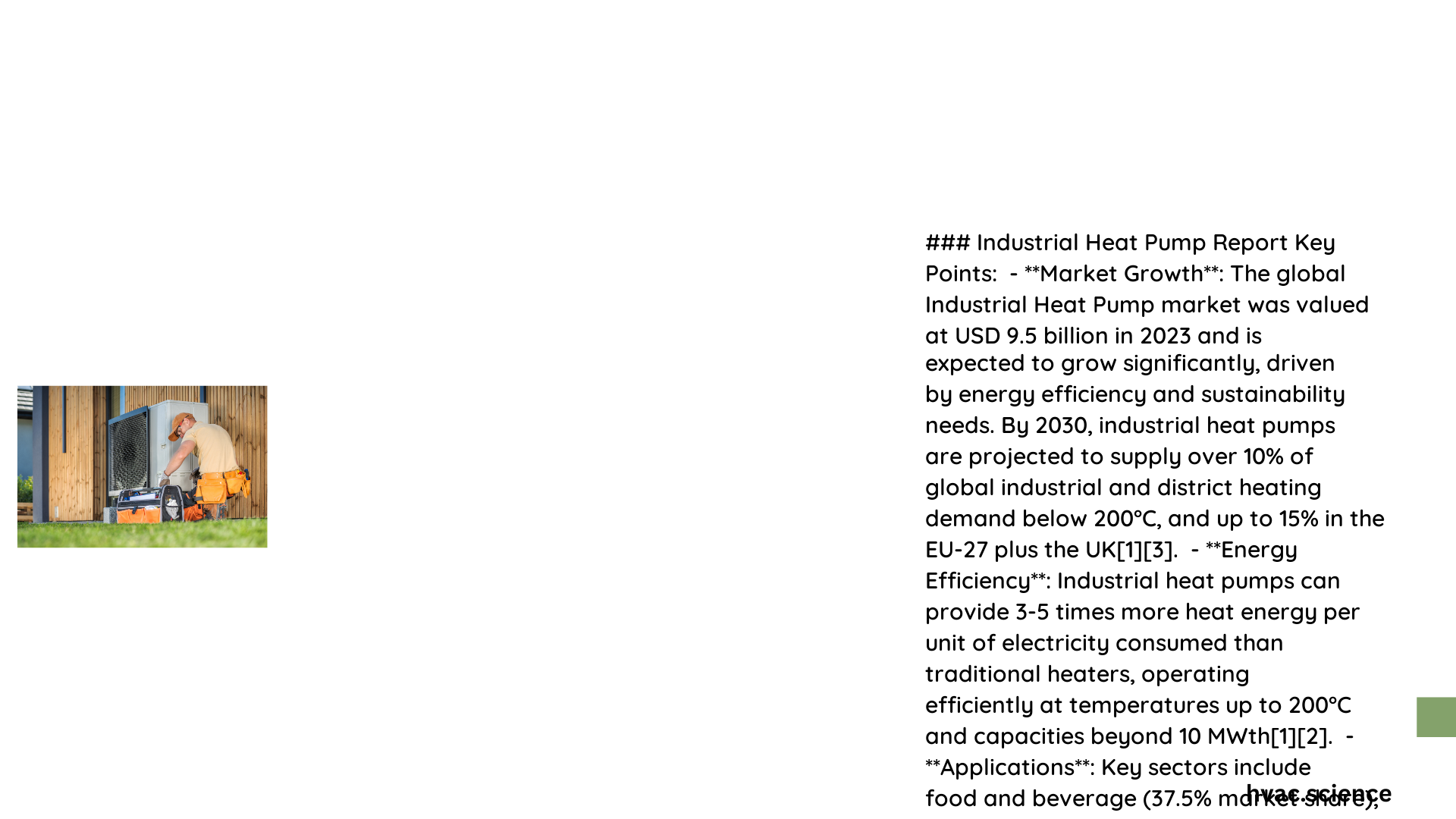The industrial heat pump report reveals critical insights into advanced thermal transfer technologies, demonstrating unprecedented efficiency metrics across manufacturing, commercial, and industrial sectors. Modern heat pump systems are achieving remarkable performance levels, with coefficient of performance (COP) ratings exceeding 3.5 and seasonal energy efficiency ratios (SEER) reaching unprecedented heights, signaling a transformative era in sustainable industrial thermal management strategies.
What Makes Industrial Heat Pumps Revolutionary?
Industrial heat pumps represent a sophisticated technological solution for energy-efficient thermal transfer, offering unprecedented opportunities for reducing carbon emissions and operational costs across multiple sectors. This comprehensive report explores the intricate dynamics of heat pump performance, efficiency metrics, and strategic implementation approaches.
How Do Industrial Heat Pumps Operate?
Industrial heat pumps leverage advanced thermodynamic principles to transfer thermal energy between different environments. Unlike traditional heating and cooling systems, these sophisticated machines can:
- Extract heat from low-temperature sources
- Transfer thermal energy with minimal energy consumption
- Operate across diverse temperature ranges
- Provide both heating and cooling capabilities
Key Performance Characteristics
| Performance Metric | Typical Range | Significance |
|---|---|---|
| Coefficient of Performance (COP) | 3.0 – 4.5 | Indicates thermal efficiency |
| Seasonal Energy Efficiency Ratio (SEER) | 14 – 22 | Measures cooling performance |
| Temperature Range | -20°F to 150°F | Operational flexibility |
What Efficiency Metrics Matter?
Coefficient of Performance (COP)
Industrial heat pumps demonstrate remarkable efficiency through their COP ratings. A COP of 3.4 means the system produces 3.4 units of thermal energy for every unit of electrical energy consumed.
Energy Efficiency Ratio (EER)
EER provides a steady-state efficiency measurement, typically calculated at specific temperature conditions:
– Standard conditions: 95°F outdoor, 80°F indoor
– Higher EER indicates superior performance
– Ranges from 11-16 for advanced industrial systems
Where Are Industrial Heat Pumps Most Effective?
Manufacturing Applications
- Food processing facilities
- Chemical production plants
- Pharmaceutical manufacturing
- Automotive component fabrication
Commercial Sector Implementations
- Large office complexes
- Data centers
- Hospitals
- Educational institutions
What Installation Considerations Exist?
Critical installation factors include:
– Spatial requirements
– Thermal load specifications
– Existing infrastructure compatibility
– Environmental conditions
– Electrical system capacity
How Do Operational Costs Compare?
Comparative analysis reveals:
– 25-40% reduction in energy expenditures
– Shorter payback periods (5-7 years)
– Significant long-term sustainability benefits
What Maintenance Strategies Optimize Performance?
Recommended maintenance protocols:
1. Quarterly comprehensive system inspections
2. Regular refrigerant level checks
3. Electrical connection assessments
4. Thermal transfer surface cleaning
5. Performance diagnostic evaluations
Conclusion

The industrial heat pump report underscores a transformative technological approach to thermal management, offering unprecedented efficiency, sustainability, and economic advantages across diverse industrial applications.
